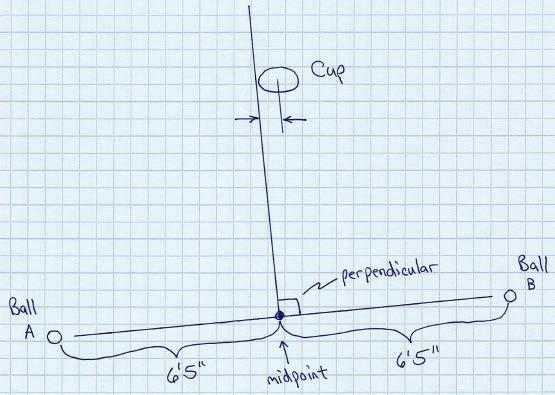The world of golf is an exciting one, filled with technicality and precision. At its core, golf is a game that takes place at the intersection of physics and geometry. Additionally, the study of golf involves kinematics which is the science of describing the motion of objects. Understanding these concepts can assist golfers improve their game by increasing their trajectory, distance, and precision in golf shots.
Geometry plays a significant role in golf, particularly concerning the angles the ball and club create on impact, with each swing’s trajectory being a test of angles and precision. The geometry begins with the golfer’s stance and the angle at which they are holding the club. This initial position determines the direction and trajectory of the golf ball after the swing. A player needs to adjust the angle of their swing according to the desired trajectory of the ball. For instance, to achieve a high arc, a golfer might need to have a steep swing plane, whereas, for a lower trajectory, a flatter swing plane might be more appropriate.
Moreover, the clubface angle, which is the angle between the clubface plane and the target line, is crucial in determining the initial direction of the ball. So, golf players constantly alter their clubface angles to control the ball’s direction. Golfers must also accurately read the green’s geometry to predict the ball’s path while putting. A putt’s direction and speed can be drastically influenced by slopes and curves of the green.
Kinematics comes into play when examining the motion of the golf ball and its relationship to the club during a swing. The club head speed, angle attack, path, and face orientation during impact, are kinematic factors that affect the ball’s initial launch conditions, like velocity, spin rate, and angle. The flight of the golf ball can be divided into two phases: the ascending phase and the descending phase. The laws of kinematics are applied in both these phases to analyze how forces like gravity and air resistance act on the ball during its flight.
The club’s movement can be viewed as a two-lever system, where the upper and lower parts of the arms act as the first lever and the club as the second. The mechanics of a golf swing is analogous to the kinematics of pendulums, where energy is transferred from the body to the club during the downswing, launching the ball into the air.
Spin also plays a crucial role in a golf ball’s kinematics. Backspin, imparted by the club’s loft and angle of attack, causes lift, making the ball rise and stay in the air longer. Side spin, on the other hand, can curve the ball left or right, resulting in different shot shapes like draws and fades.
Furthermore, the technological advancement in golf equipment also revolves around golf geometry and kinematics. Golf club and ball designs are constantly refined to maximize performance in terms of distance, accuracy, and consistency. For example, golf club manufacturers often alter clubhead design, modifying things like the center of gravity placement, loft, and face angle, to fine-tune how the golf club interacts with the ball at impact, significantly affecting the launch conditions.
In conclusion, golf’s underlying principles of geometry and kinematics offer a rich tapestry to explore and understand this intricate sport better. Armed with these definitions and understandings, golfers can make adjustments to their strategy and technique to enhance their performance on the course. It’s a game where science and skill meet in a dance that, when performed well, results in the perfect shot.




